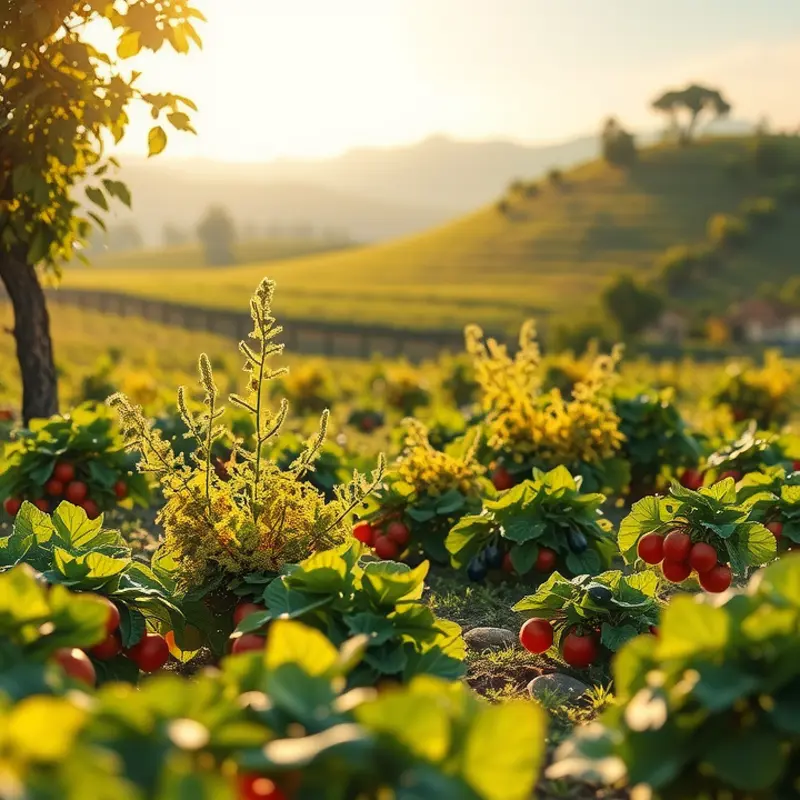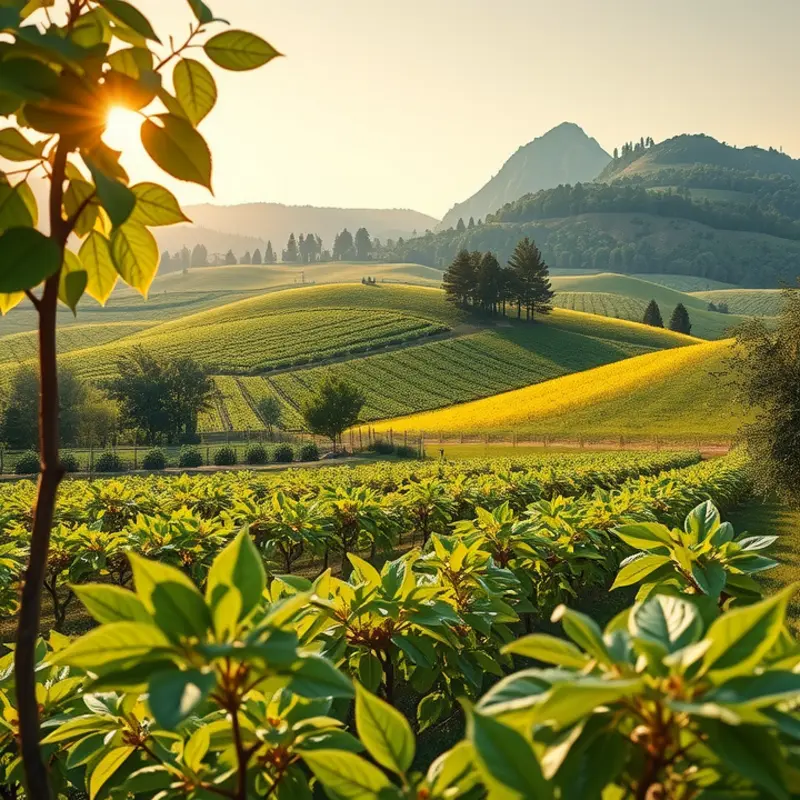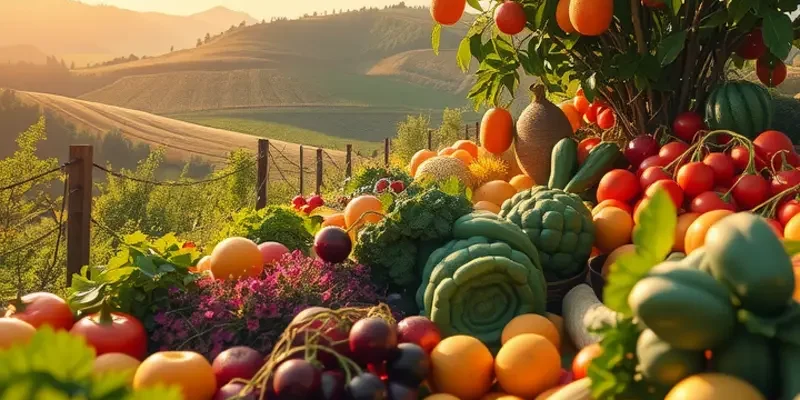The Amazon, often considered the lungs of the Earth, is not just a treasure trove of biodiversity. Beneath its expansive canopy lies a vibrant culinary heritage that reflects the region’s diverse cultures, indigenous practices, and uniquely available ingredients. From fragrant spices to resilient crops nurtured by the rainforest, the Amazon offers an unparalleled exploration of flavors that tell stories of community, tradition, and sustainability. Join us as we dive deeper into this flourishing culinary landscape and discover the sacred food practices that have been passed down through generations.
Nature’s Bounty: Ingredients from the Heart of the Amazon

The Amazon Basin is a treasure trove of unique, vibrant ingredients that define its distinctive cuisine. From lustrous fruits that whisper the secrets of the jungle to robust proteins that sustain the river communities, each element contributes to a rich culinary tapestry. These ingredients not only form the foundation of Amazonian dishes but are also steeped in cultural significance and sustainability efforts.
Central to Amazonian cuisine are the fruits. Imagine biting into a cupuaçu, a cousin of cacao, with its creamy flesh reminiscent of both chocolate and tropical fruit combined. Another gem is the açaí berry, celebrated for its vibrant color and high antioxidant content. Local communities traditionally harvest these berries, emphasizing necessity and ritual in their usage.
Vegetables, too, offer a glimpse into the biodiversity of the Amazon. Manioc, or cassava, is a staple root vegetable appearing in myriad forms—from flour to tapioca pearls. Its versatility is matched by tucupi, a yellow sauce derived from manioc, revered for its complex flavor profile. These ingredients leverage the land’s generosity while adhering to sustainable practices, such as rotational planting and natural fertilizers.
Within the river’s embrace lies a plethora of proteins, showcasing the region’s aquatic bounty. Indigenous fish like pirarucu and tambaqui are integral to Amazonian diets. Pirarucu, often referred to as the “cod of the Amazon,” offers a lean yet rich meat, perfect for grilling or stewing. Local fishermen employ age-old techniques that harmonize with nature, ensuring the delicate balance of aquatic ecosystems remains intact.
Additionally, the Amazon supports various unique spices and herbs that enliven its cuisine. Jambu, a distinctive herb known for its numbing effect, adds a playful tickle to soups and stews. These ingredients symbolize the Amazon’s interwoven cultural and ecological narratives, influencing culinary traditions globally.
Understanding these elements extends beyond mere consumption and opens a dialogue about the interpersonal relationships among local communities. The shared labor of harvesting strengthens social bonds and imparts ancestral knowledge to future generations. Various intercultural exchanges also blossom from these practices, influencing and expanding beyond regional borders.
Moreover, the Amazonian way of life enforces respect for nature’s cycles, deeply woven into every dish that graces their tables. Ensuring the sustainability of these food sources reflects a profound commitment to both conservation and cultural preservation.
For those captivated by these flavors, exploring sustainable food storage techniques can further enhance appreciation for these delicacies. Learning about eco-smart kitchen storage ensures that the vivid tastes of the Amazon reach kitchens globally while minimizing ecological footprints.
By savoring the Amazon’s bounty, we honor not only the ingredients themselves but also the vibrant cultures and ecosystems from which they spring. As we continue this culinary voyage, it becomes clear that the heart of Amazonian cuisine is not just about what grows, but how it integrates and supports life within this majestic environment.
Culinary Practices: Fusions of Flavor and Tradition

The Amazon Basin is a culinary paradox, where ancient practice meets modern innovation, creating tastes that are both familiar and extraordinary. Indigenous communities hold rich culinary traditions, refined over millennia. These practices ensure sustenance and celebrate the vast biodiversity of the rainforest.
Traditional techniques like smoking, drying, and fermenting are pervasive. Smoking not only preserves food but infuses it with the unique scent of local woods and plants. This method links today’s meals with the preservation practices of ancestors, offering flavors that reflect the history of the land. The drying of fish and meat, often under the sun, connects communities with sustainable practices, ensuring resources are utilized without waste.
Fermentation—a technique that transforms ordinary ingredients into complex flavor profiles—adds layers of acidity and depth. Chicha, a traditional fermented beverage often made from manioc or maize, is more than just sustenance. It represents communal gatherings, where the preparation and sharing of drinks strengthen social ties and cultural identity.
This commitment to tradition finds harmony with contemporary culinary exploration. Modern chefs in the Amazon are embracing and adapting these age-old methods. They blend them with global culinary trends, creating an alluring mosaic of flavors that pays homage to their origins while innovating for the future. Chefs experiment with local staples, such as açaí and cupuaçu, infusing them into dishes that astonish and delight.
Alongside traditional practices, there’s a growing presence of fusion dishes. These creations utilize non-traditional ingredients and techniques, highlighting the adaptability and ingenuity of Amazonian cuisine. A notable example is the introduction of molecular gastronomy, which reimagines classic flavors through scientific techniques. This fusion respects the essence of the Amazon yet expands its culinary boundaries, inviting diners to taste tradition in novel forms.
Ritualistic aspects of food in the Amazon cannot be overstated. Meals are more than mere sustenance; they carry deep-rooted cultural significance. Feasts mark seasons, harvests, and moments of life, reinforcing the interconnectedness of the people with their environment. For indigenous peoples, preparing and sharing meals is an act of honoring their ancestors, a vibrant discussion with history itself.
Contemporary chefs embrace these principles, seeking sustainability in every dish while celebrating the incredible biodiversity of the region. They promote eco-friendly practices, drawing inspiration from holistic approaches that respect the delicate balance of the Amazonian ecosystem.
For those intrigued by the daring flavors and stories of the Amazon, one can explore how chefs across the globe are influenced by its diverse culinary heritage. The essence of these practices connects to broader culinary trends, where the importance of sustainability and tradition are interwoven. A thoughtful exploration into eco-smart kitchen storage reflects similar values.
This fusion of flavors and traditions from the Amazon Basin captures not just the palate but the imagination. It challenges us to consider how the food we consume connects us to distant cultures and histories—one meal, one flavor at a time.
Final words
The Amazon’s food heritage is a reflection of its vibrant ecosystems, deep cultural roots, and the sustainable practices upheld by its communities. By exploring the distinct ingredients and culinary traditions of the region, we find a treasure trove of stories woven with respect for nature and a commitment to preserving the land for future generations. This journey not only educates food enthusiasts but also invites everyone to appreciate the unparalleled richness of global culinary traditions. Embracing these flavors can lead to a deeper connection with the environment and the communities that continue to nurture this land and its legacy.








